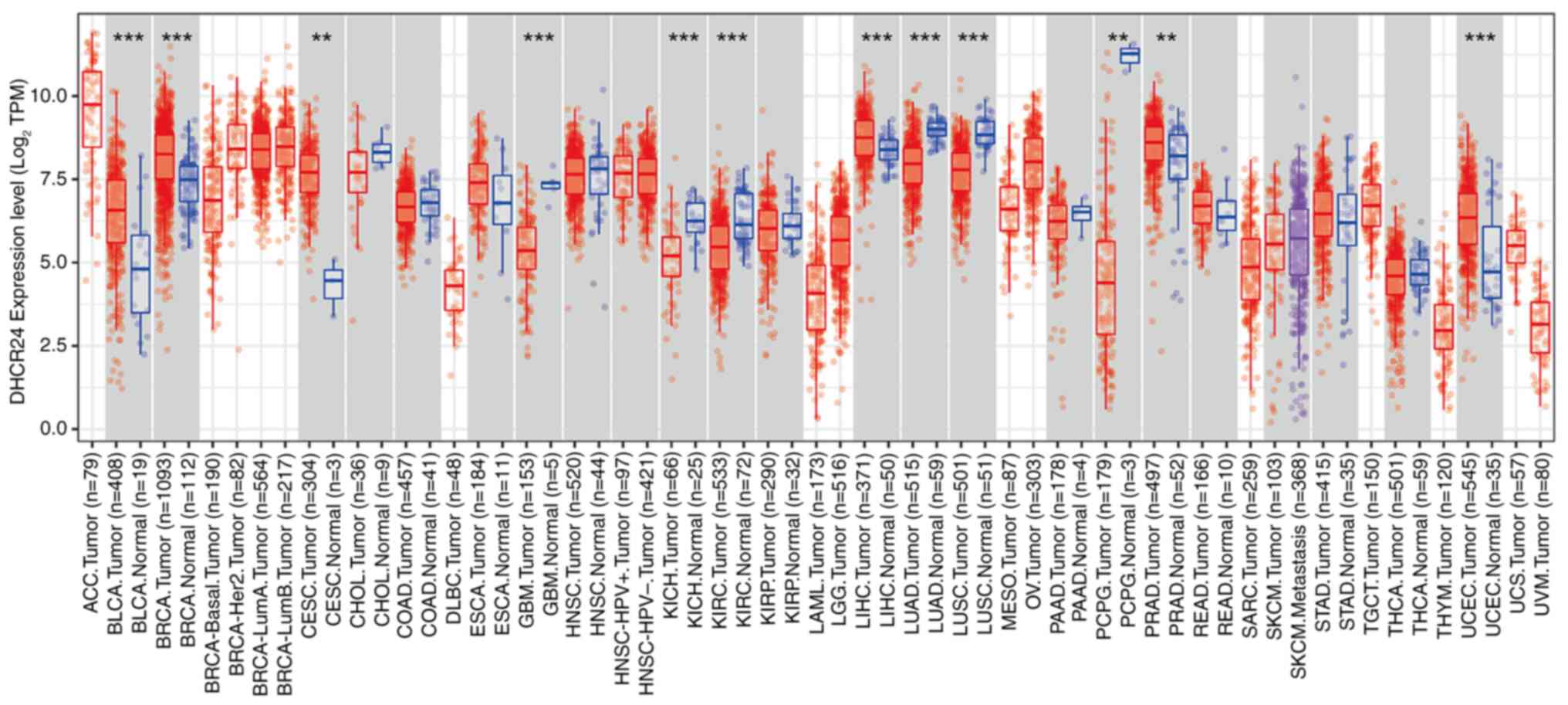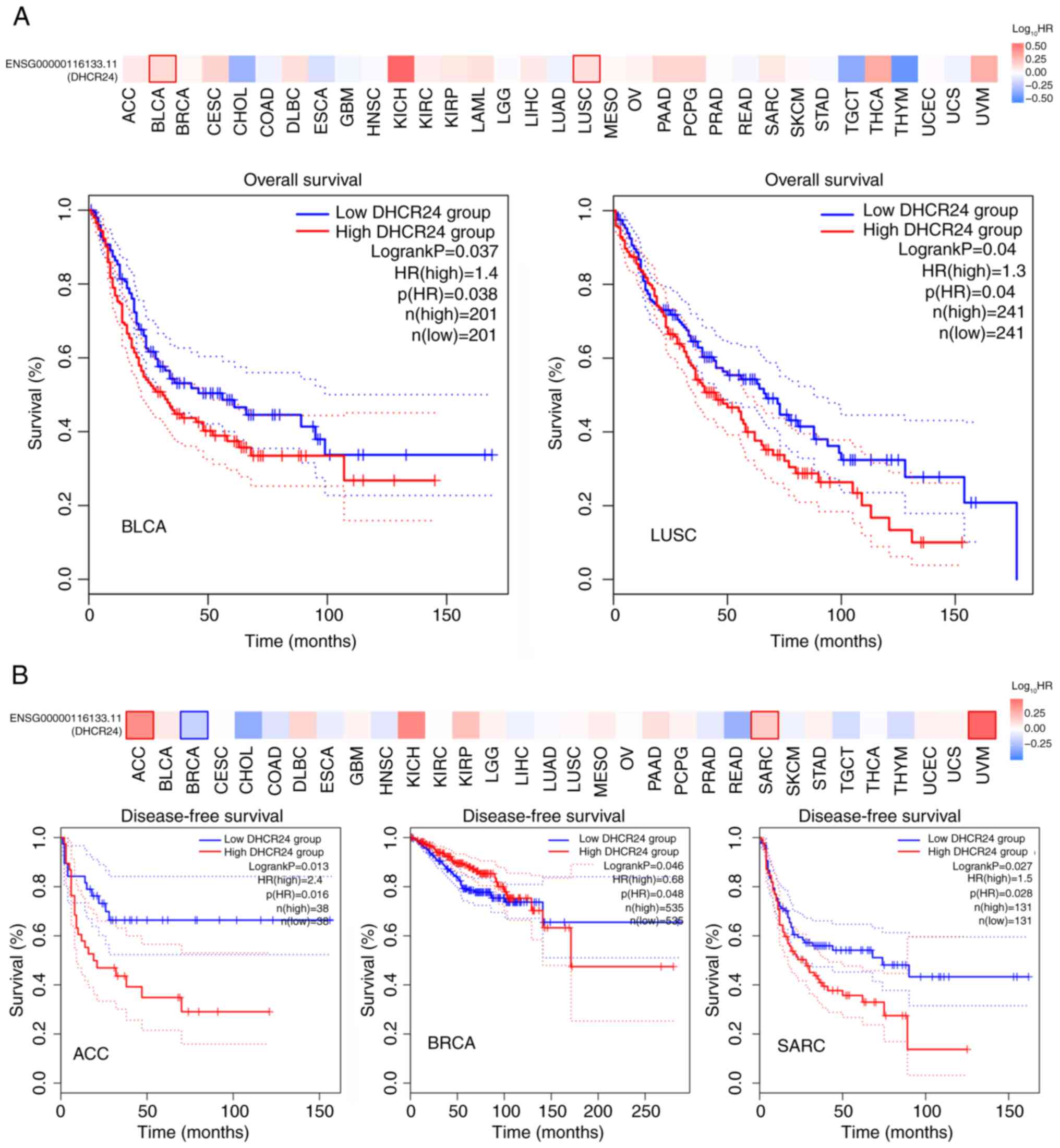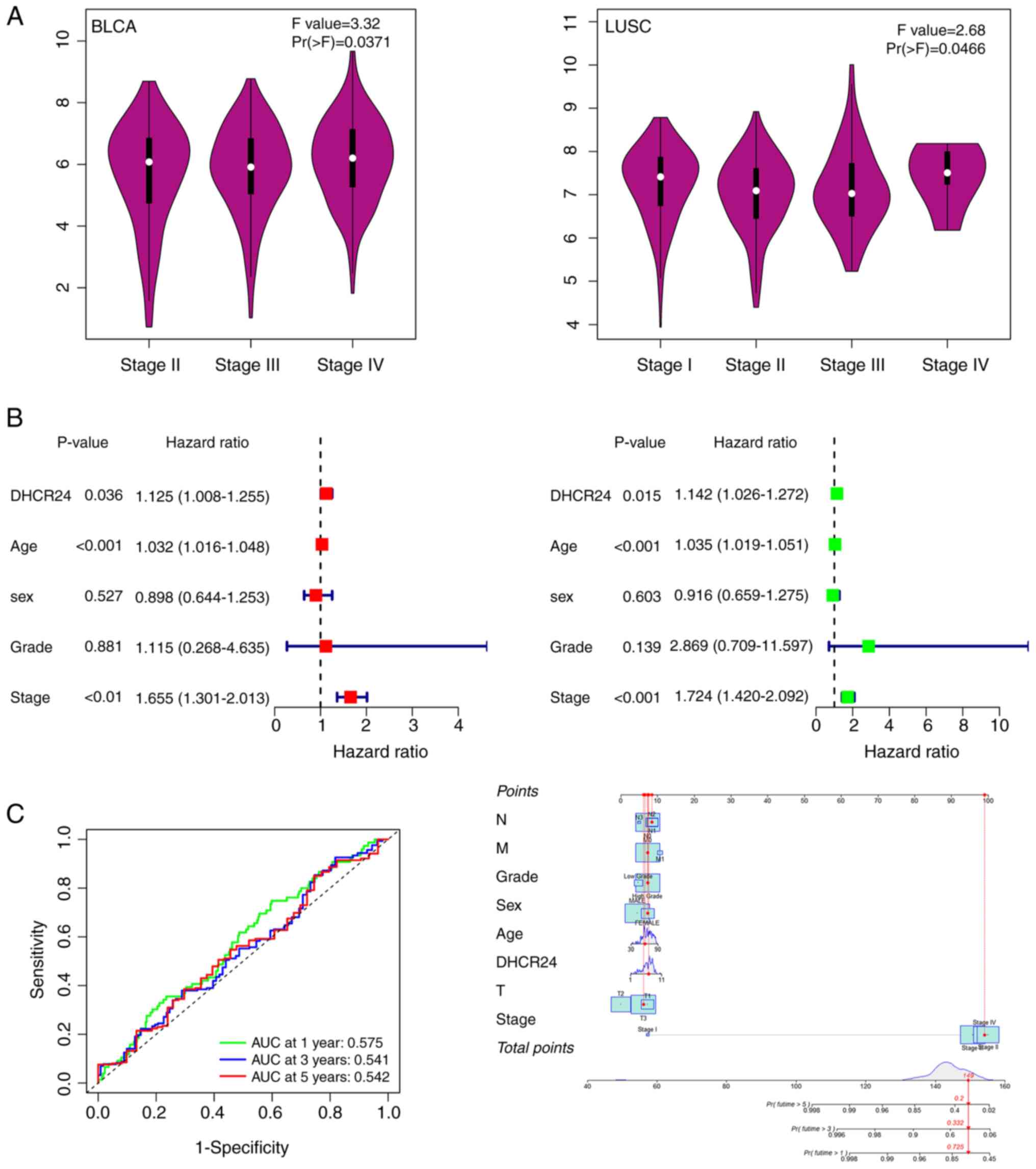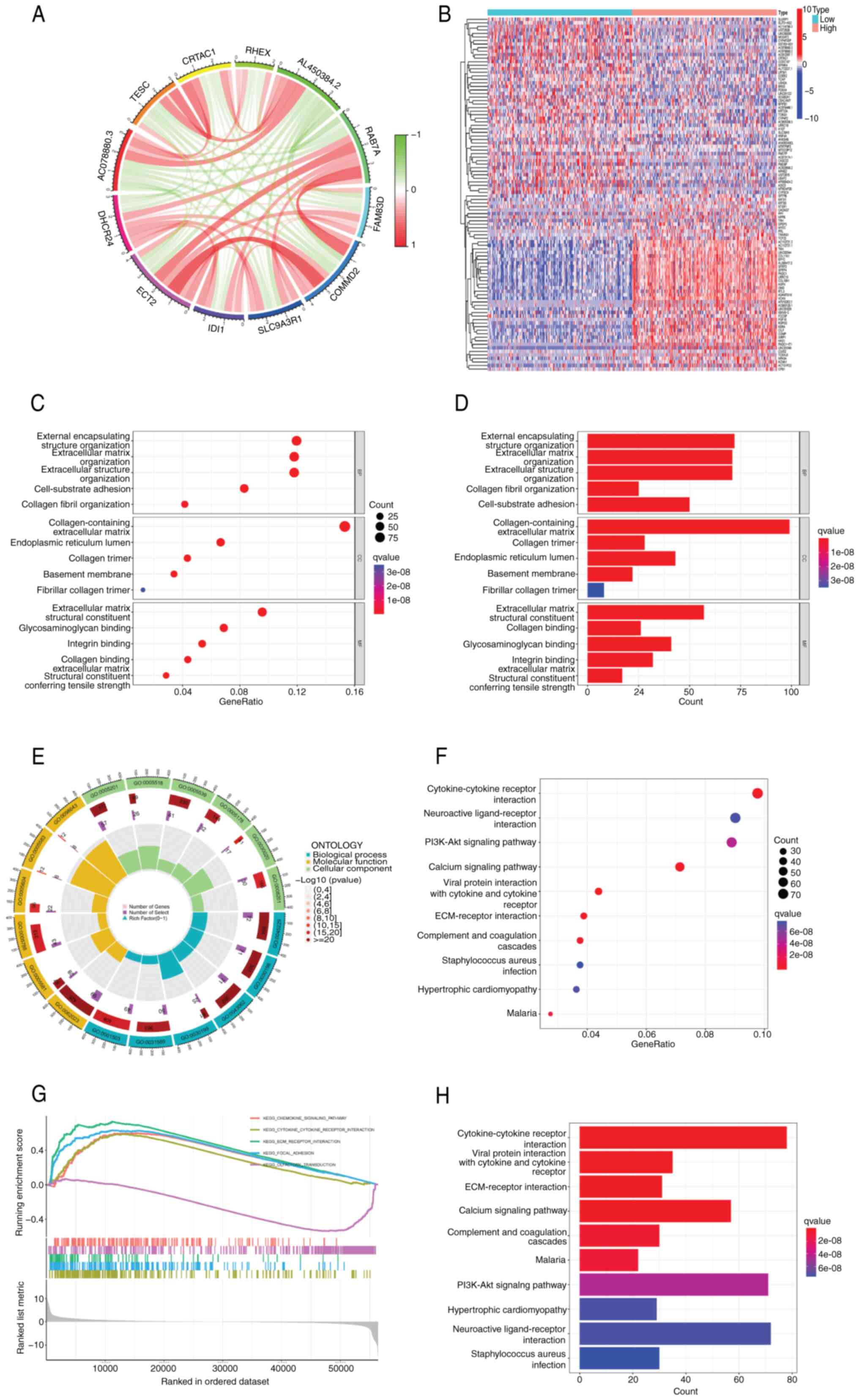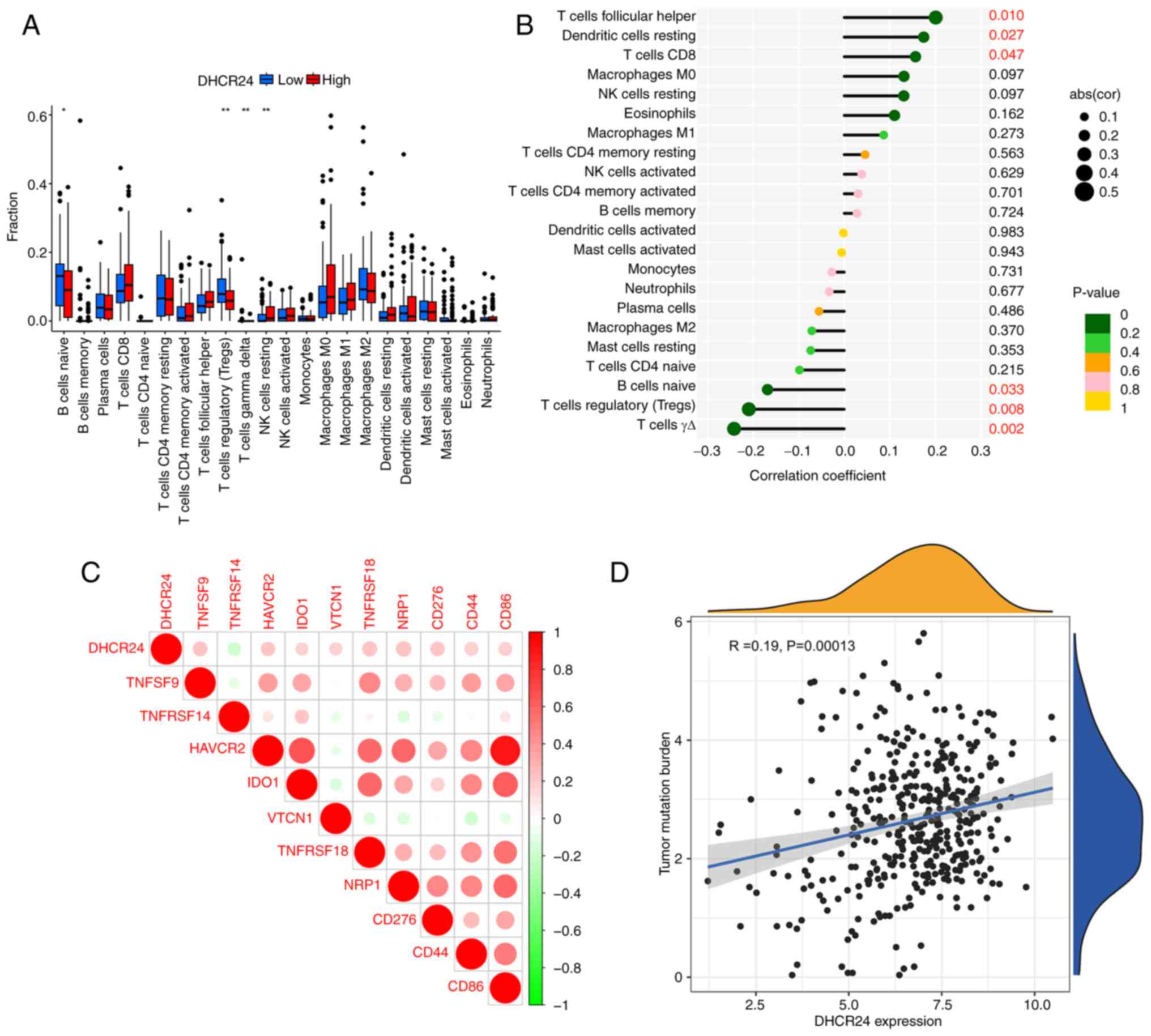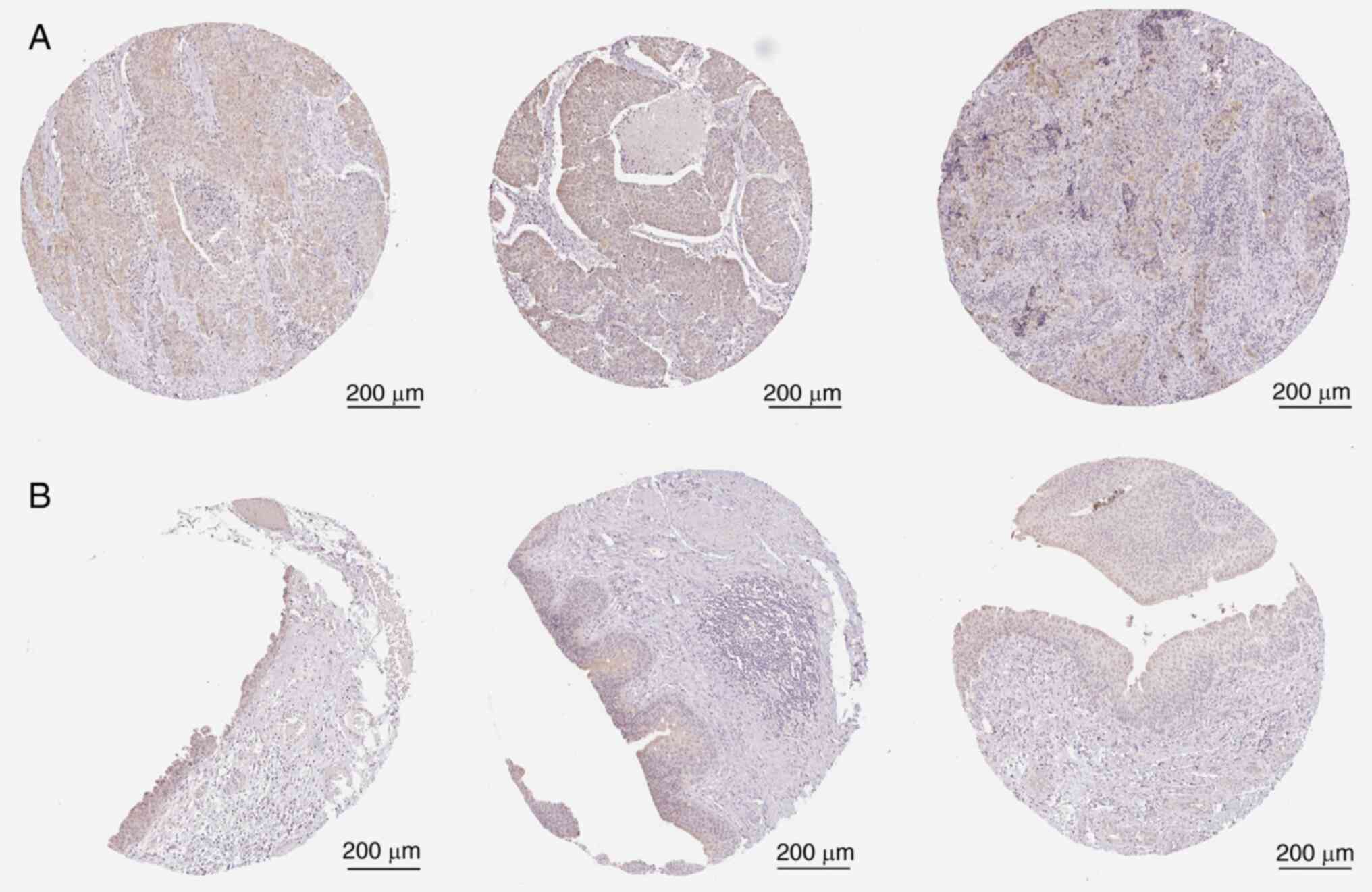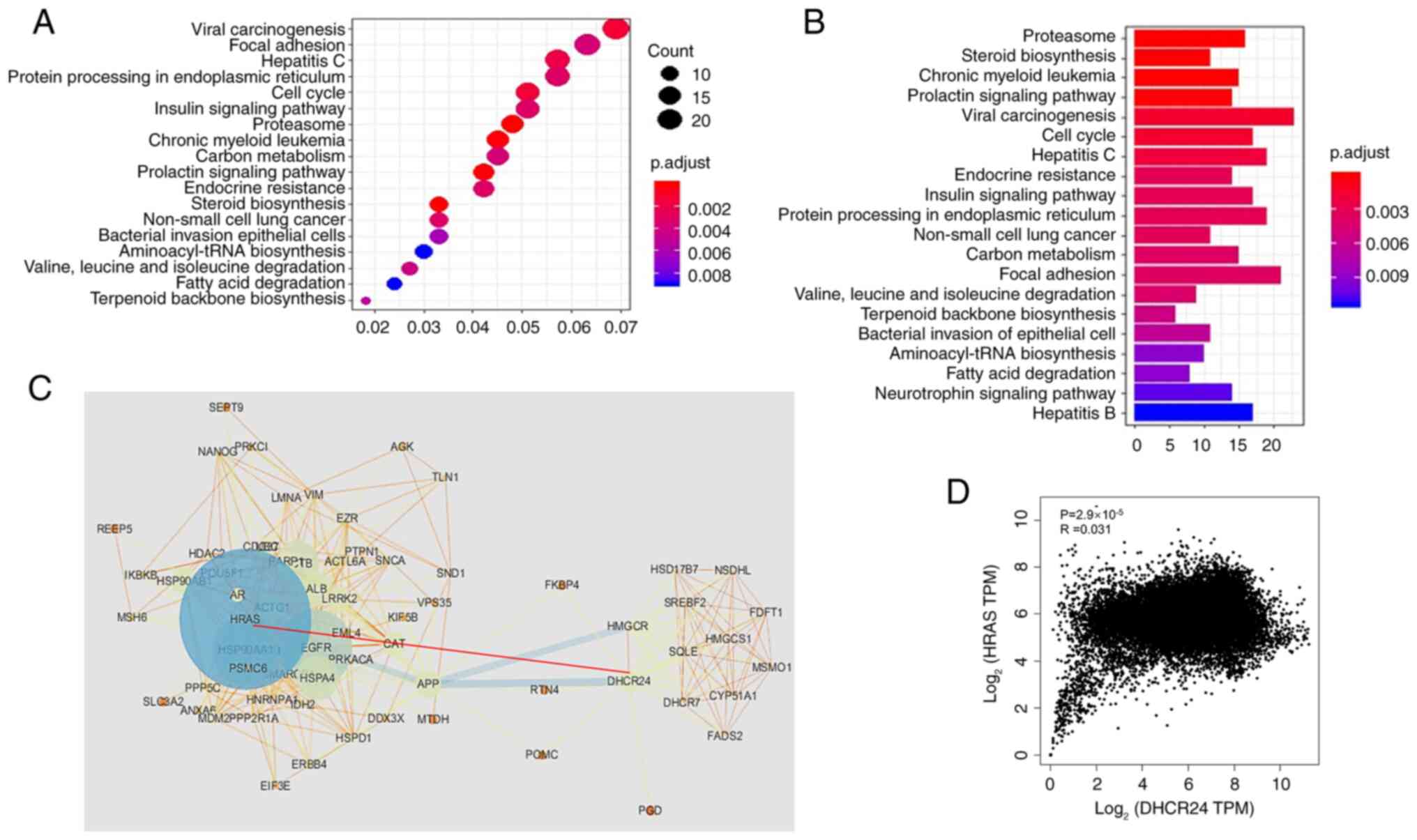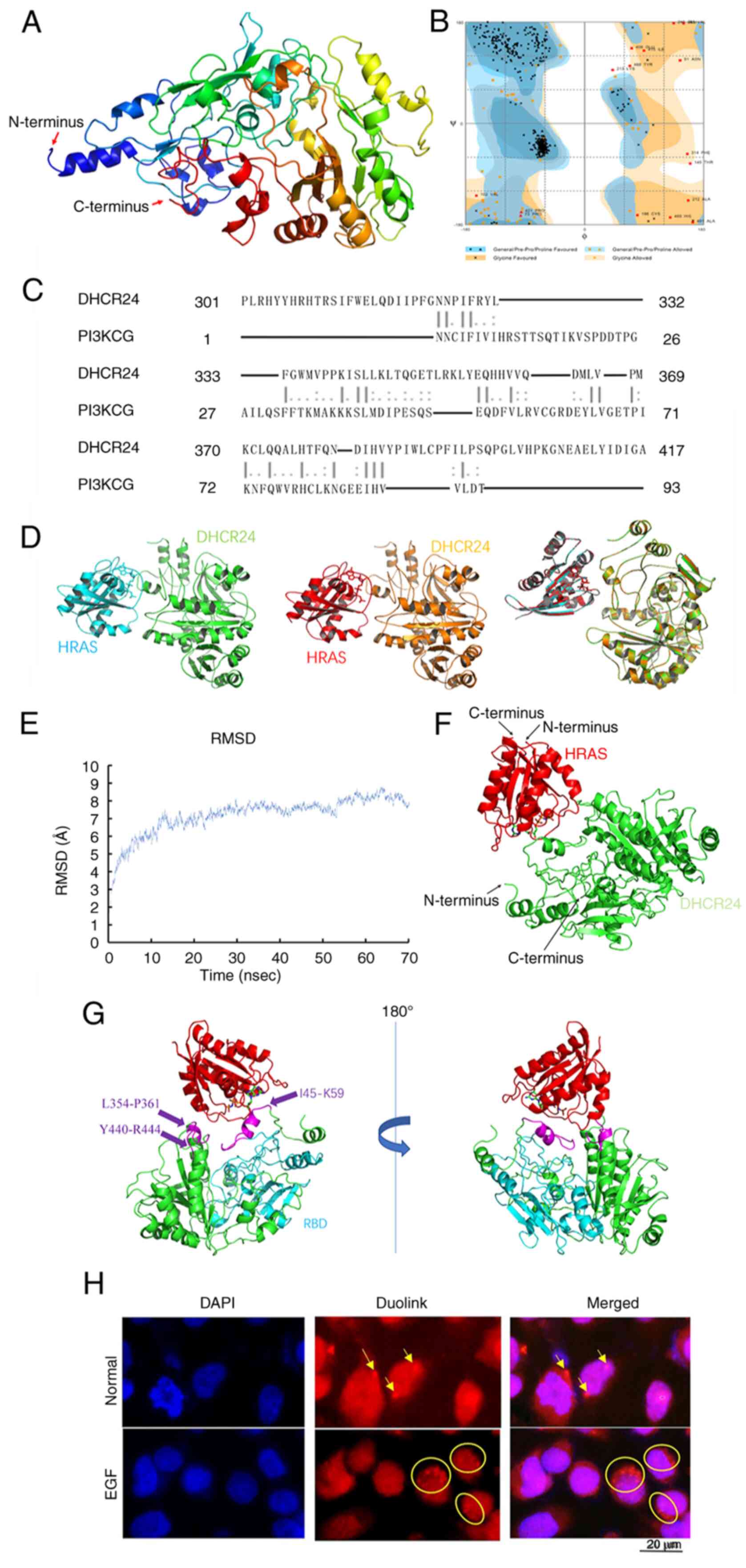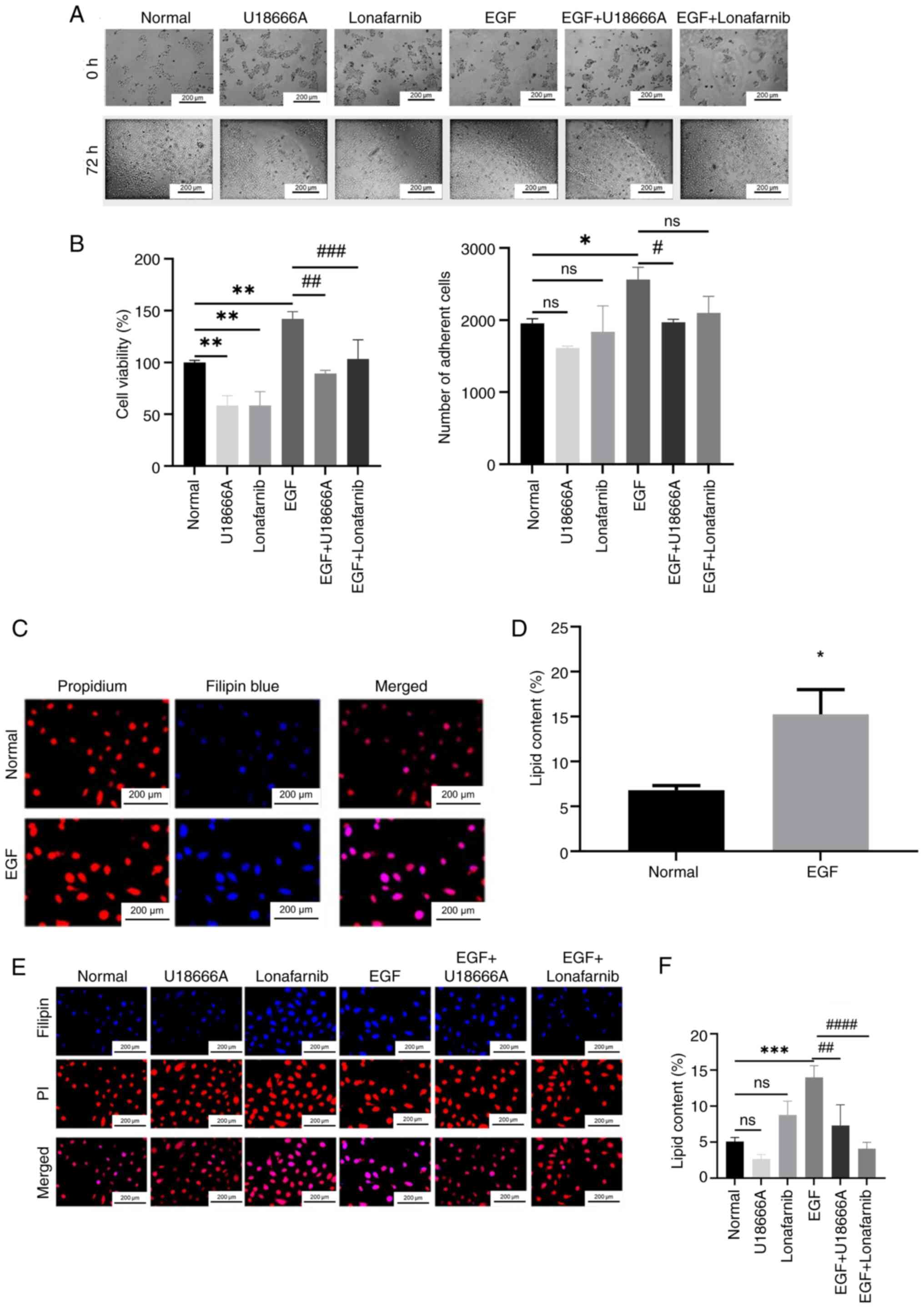|
1
|
Haas MJ and Mooradian AD: Potential
therapeutic agents that target ATP binding cassette A1 (ABCA1) gene
expression. Drugs. 82:1055–1075. 2022. View Article : Google Scholar : PubMed/NCBI
|
|
2
|
Wahida A, Buschhorn L, Fröhling S, Jost
PJ, Schneeweiss A, Lichter P and Kurzrock R: The coming decade in
precision oncology: Six riddles. Nat Rev Cancer. 23:43–54. 2023.
View Article : Google Scholar : PubMed/NCBI
|
|
3
|
Zhou C, Solomon B, Loong HH, Park K, Pérol
M, Arriola E, Novello S, Han B, Zhou J, Ardizzoni A, et al:
First-line selpercatinib or chemotherapy and pembrolizumab in RET
Fusion-positive NSCLC. N Engl J Med. 389:1839–1850. 2023.
View Article : Google Scholar : PubMed/NCBI
|
|
4
|
Last AR, Ference JD and Menzel ER:
Hyperlipidemia: Drugs for cardiovascular risk reduction in adults.
Am Fam Physician. 95:78–87. 2017.PubMed/NCBI
|
|
5
|
Nong S, Han X, Xiang Y, Qian Y, Wei Y,
Zhang T, Tian K, Shen K, Yang J and Ma X: Metabolic reprogramming
in cancer: Mechanisms and therapeutics. MedComm (2020). 4:e2182023.
View Article : Google Scholar : PubMed/NCBI
|
|
6
|
Giacomini I, Gianfanti F, Desbats MA, Orso
G, Berretta M, Prayer-Galetti T, Ragazzi E and Cocetta V:
Cholesterol metabolic reprogramming in cancer and its
pharmacological modulation as therapeutic strategy. Front Oncol.
11:6829112021. View Article : Google Scholar : PubMed/NCBI
|
|
7
|
Patel K and Kashfi K: Lipoproteins and
cancer: The role of HDL-C, LDL-C, and cholesterol-lowering drugs.
Biochem Pharmacol. 196:1146542022. View Article : Google Scholar : PubMed/NCBI
|
|
8
|
Pelton K, Freeman M and Solomon K:
Cholesterol and prostate cancer. Curr Opin Pharmacol. 12:751–759.
2012. View Article : Google Scholar : PubMed/NCBI
|
|
9
|
Jun SY, Brown AJ, Chua NK, Yoon JY, Lee
JJ, Yang JO, Jang I, Jeon SJ, Choi TI, Kim CH and Kim NS: Reduction
of squalene epoxidase by cholesterol accumulation accelerates
colorectal cancer progression and metastasis. Gastroenterology.
160:1194–1207.e28. 2021. View Article : Google Scholar : PubMed/NCBI
|
|
10
|
Baek AE, Yu YA, He S, Wardell SE, Chang
CY, Kwon S, Pillai RV, McDowell HB, Thompson JW, Dubois LG, et al:
The cholesterol metabolite 27 hydroxycholesterol facilitates breast
cancer metastasis through its actions on immune cells. Nat Commun.
8:8642017. View Article : Google Scholar : PubMed/NCBI
|
|
11
|
Zhao Y, Chen J, Zheng H, Luo Y, An M, Lin
Y, Pang M, Li Y, Kong Y, He W, et al: SUMOylation-Driven mRNA
circularization enhances translation and promotes lymphatic
metastasis of bladder cancer. Cancer Res. 84:434–448. 2023.
View Article : Google Scholar : PubMed/NCBI
|
|
12
|
Luu W, Zerenturk EJ, Kristiana I, Bucknall
MP, Sharpe LJ and Brown AJ: Signaling regulates activity of DHCR24,
the final enzyme in cholesterol synthesis. J Lipid Res. 55:410–420.
2014. View Article : Google Scholar : PubMed/NCBI
|
|
13
|
Lu Z, Wang H, Zhang X, Huang X, Jiang S,
Li Y, Liu T, Lu X and Gao B: High fat diet induces brain injury and
neuronal apoptosis via down-regulating 3-β hydroxycholesterol 24
reductase (DHCR24). Cell Tissue Res. 393:471–487. 2023. View Article : Google Scholar : PubMed/NCBI
|
|
14
|
Chen CH, Weng TH, Huang KY, Kao HJ, Liao
KW and Weng SL: Anticancer peptide Q7 suppresses the growth and
migration of human endometrial cancer by inhibiting DHCR24
expression and modulating the AKT-mediated pathway. Int J Med Sci.
19:2008–2021. 2022. View Article : Google Scholar : PubMed/NCBI
|
|
15
|
Wu J, Guo L, Qiu X, Ren Y, Li F, Cui W and
Song S: Genkwadaphnin inhibits growth and invasion in
hepatocellular carcinoma by blocking DHCR24-mediated cholesterol
biosynthesis and lipid rafts formation. Br J Cancer. 123:1673–1685.
2020. View Article : Google Scholar : PubMed/NCBI
|
|
16
|
Yuan W, Yong W, Zhu J and Shi D: DPP4
regulates DHCR24-mediated cholesterol biosynthesis to promote
methotrexate resistance in gestational trophoblastic neoplastic
cells. Front Oncol. 11:7040242021. View Article : Google Scholar : PubMed/NCBI
|
|
17
|
Yan-Long S, Ming-Bo L, Hong-Ting W, Ye H
and Xuan H: GLTP is a potential prognostic biomarker and correlates
with immunotherapy efficacy in cervical cancer. Dis Markers.
2022:91093652022.PubMed/NCBI
|
|
18
|
Zeynab A, Nasrin Z and Roghayeh A:
Anticancer effects of cinnamaldehyde through inhibition of
ErbB2/HSF1/LDHA pathway in 5637 cell line of bladder cancer.
Anticancer Agents Med Chem. 22:1139–1148. 2022. View Article : Google Scholar : PubMed/NCBI
|
|
19
|
Motie FM, Soltani Howyzeh M and
Ghanbariasad A: Synergic effects of DL-limonene, R-limonene, and
cisplatin on AKT, PI3K, and mTOR gene expression in MDA-MB-231 and
5637 cell lines. Int J Biol Macromol. 280:1362162024. View Article : Google Scholar : PubMed/NCBI
|
|
20
|
Pezeshki S, Hashemi P, Salimi A, Ebrahimi
S, Javanzad M and Monfaredan A: Evaluation of NUF2 and GMNN
expression in prostate cancer: Potential biomarkers for prostate
cancer screening. Rep Biochem Mol Biol. 10:224–232. 2021.PubMed/NCBI
|
|
21
|
Xia L, Oyang L, Lin J, Tan S, Han Y, Wu N,
Yi P, Tang L, Pan Q, Rao S, et al: The cancer metabolic
reprogramming and immune response. Mol Cancer. 20:282021.
View Article : Google Scholar : PubMed/NCBI
|
|
22
|
Gonzalez MW and Kann MG: Chapter 4:
Protein interactions and disease. PLoS Comput Biol. 8:e10028192012.
View Article : Google Scholar : PubMed/NCBI
|
|
23
|
Astrain G, Nikolova M and Smith MJ:
Functional diversity in the RAS subfamily of small GTPases. Biochem
Soc Trans. 50:921–933. 2022. View Article : Google Scholar : PubMed/NCBI
|
|
24
|
Jumper J, Evans R, Pritzel A, Green T,
Figurnov M, Ronneberger O, Tunyasuvunakool K, Bates R, Žídek A,
Potapenko A, et al: Highly accurate protein structure prediction
with AlphaFold. Naturev. 596:583–589. 2021. View Article : Google Scholar : PubMed/NCBI
|
|
25
|
Wee P and Wang Z: Epidermal growth factor
receptor cell proliferation signaling pathways. Cancers (Basel).
9:522017. View Article : Google Scholar : PubMed/NCBI
|
|
26
|
Delano WL: The PyMol molecular graphics
system. Proteins Structure Function Bioinformatics. 30:442–454.
2002.
|
|
27
|
Phillips JC, Braun R, Wang W, Gumbart J,
Tajkhorshid E, Villa E, Chipot C, Skeel RD, Kalé L and Schulten K:
Scalable molecular dynamics with NAMD. J Comput Chem. 26:1781–802.
2005. View Article : Google Scholar : PubMed/NCBI
|
|
28
|
Wang H, Lu Z, Li Y, Liu T, Zhao L, Gao T,
Lu X and Gao B: Virtual screening of Novel 24-dehydroxysterol
reductase (DHCR24) inhibitors and the biological evaluation of
irbesartan in Cholesterol-lowering effect. Molecules. 28:26432023.
View Article : Google Scholar : PubMed/NCBI
|
|
29
|
Liu T, Li Y, Yang B, Wang H, Lu C, Chang
AK, Huang X, Zhang X, Lu Z, Lu X and Gao B: Suppression of neuronal
cholesterol biosynthesis impairs brain functions through
insulin-like growth factor I-Akt signaling. Int J Biol Sci.
17:3702–3716. 2021. View Article : Google Scholar : PubMed/NCBI
|
|
30
|
Quan X, Chen X, Sun D, Xu B, Zhao L, Shi
X, Liu H, Gao B and Lu X: The mechanism of the effect of U18666a on
blocking the activity of 3β-hydroxysterol Δ-24-reductase (DHCR24):
Molecular dynamics simulation study and free energy analysis. J Mol
Model. 22:462016. View Article : Google Scholar : PubMed/NCBI
|
|
31
|
Sung H, Ferlay J, Siegel RL, Laversanne M,
Soerjomataram I, Jemal A and Bray F: Global cancer statistics 2020:
GLOBOCAN estimates of incidence and mortality worldwide for 36
cancers in 185 countries. CA Cancer J Clin. 71:209–249. 2021.
View Article : Google Scholar : PubMed/NCBI
|
|
32
|
Yang Y, Liu P, Zhou M, Yin L, Wang M, Liu
T, Jiang X and Gao H: Small-molecule drugs of colorectal cancer:
Current status and future directions. Biochim Biophys Acta Mol
Basis Dis. 1870:1668802024. View Article : Google Scholar : PubMed/NCBI
|
|
33
|
Crosby D, Bhatia S, Brindle KM, Coussens
LM, Dive C, Emberton M, Esener S, Fitzgerald RC, Gambhir SS and
Kuhn P: Early detection of cancer. Science. 375:eaay90402022.
View Article : Google Scholar : PubMed/NCBI
|
|
34
|
Zhang X, Xie J, Yang Z, Yu CKW, Hu Y and
Qin J: Tumour heterogeneity and personalized treatment screening
based on single-cell transcriptomics. Comput Struct Biotechnol J.
27:307–320. 2024. View Article : Google Scholar : PubMed/NCBI
|
|
35
|
Li J, Li X, Huang H, Tao L, Zhang C, Xie Y
and Jiang Y: SERCA3Role of in the prognosis and immune function in
Pan-cancer. J Oncol. 2022:93598792022. View Article : Google Scholar : PubMed/NCBI
|
|
36
|
Song J, Yang R, Wei R, Du Y, He P and Liu
X: Pan-cancer analysis reveals RIPK2 predicts prognosis and
promotes immune therapy resistance via triggering cytotoxic T
lymphocytes dysfunction. Mol Med. 28:472022. View Article : Google Scholar : PubMed/NCBI
|
|
37
|
Fang Z, Li P, Li H, Chong W, Li L, Shang L
and Li F: New insights into PTBP3 in human cancers: Immune cell
infiltration, TMB, MSI, PDCD1 and m6A markers. Front Pharmacol.
13:8113382022. View Article : Google Scholar : PubMed/NCBI
|
|
38
|
Rossini E, Biscetti F, Rando MM, Nardella
E, Cecchini AL, Nicolazzi MA, Covino M, Gasbarrini A, Massetti M
and Flex A: Statins in high cardiovascular risk patients: Do
comorbidities and characteristics matter? Int J Mol Sci.
23:93262022. View Article : Google Scholar : PubMed/NCBI
|
|
39
|
Zhou E, Ge X, Nakashima H, Li R, van der
Zande HJP, Liu C, Li Z, Müller C, Bracher F, Mohammed Y, et al:
Inhibition of DHCR24 activates LXRα to ameliorate hepatic steatosis
and inflammation. EMBO Mol Med. 15:e168452023. View Article : Google Scholar : PubMed/NCBI
|
|
40
|
Bravi F, Scotti L, Bosetti C, Talamini R,
Negri E, Montella M, Franceschi S and La Vecchia C: Self-reported
history of hypercholesterolaemia and gallstones and the risk of
prostate cancer. Ann Oncol. 17:1014–1017. 2006. View Article : Google Scholar : PubMed/NCBI
|
|
41
|
Murtola TJ, Kasurinen TVJ, Talala K, Taari
K, Tammela TLJ and Auvinen A: Serum cholesterol and prostate cancer
risk in the Finnish randomized study of screening for prostate
cancer. Prostate Cancer Prostatic Dis. 22:66–76. 2019. View Article : Google Scholar : PubMed/NCBI
|
|
42
|
Yang L, Sun J, Li M, Long Y, Zhang D, Guo
H, Huang R and Yan J: Oxidized Low-density lipoprotein links
hypercholesterolemia and bladder cancer aggressiveness by promoting
cancer stemness. Cancer Res. 81:5720–5732. 2021. View Article : Google Scholar : PubMed/NCBI
|
|
43
|
Glaser S, Hsu J and Gulley M: Epstein-Barr
virus and breast cancer: State of the evidence for viral
carcinogenesis. Cancer Epidemiol Biomarkers Prev. 13:688–697. 2004.
View Article : Google Scholar : PubMed/NCBI
|
|
44
|
Liang Q, Yao X, Tang S, Zhang J, Yau TO,
Li X, Tang CM, Kang W, Lung RW, Li JW, et al: Integrative
identification of Epstein-Barr virus-associated mutations and
epigenetic alterations in gastric cancer. Gastroenterology.
147:350–1362.e4. 2014. View Article : Google Scholar
|
|
45
|
Glaviano A, Foo ASC, Lam HY, Yap KCH,
Jacot W, Jones RH, Eng H, Nair MG, Makvandi P, Geoerger B, et al:
PI3K/AKT/mTOR signaling transduction pathway and targeted therapies
in cancer. Mol Cancer. 22:1382023. View Article : Google Scholar : PubMed/NCBI
|
|
46
|
Rezaei S, Nikpanjeh N, Rezaee A, Gholami
S, Hashemipour R, Biavarz N, Yousefi F, Tashakori A, Salmani F,
Rajabi R, et al: PI3K/Akt signaling in urological cancers:
Tumorigenesis function, therapeutic potential, and therapy response
regulation. Eur J Pharmacol. 955:1759092023. View Article : Google Scholar : PubMed/NCBI
|
|
47
|
Houédé N and Pourquier P: Targeting the
genetic alterations of the PI3K-AKT-mTOR pathway: Its potential use
in the treatment of bladder cancers. Pharmacol Ther. 145:1–18.
2015. View Article : Google Scholar : PubMed/NCBI
|
|
48
|
Zhang Y and Zhang Z: The history and
advances in cancer immunotherapy: Understanding the characteristics
of tumor-infiltrating immune cells and their therapeutic
implications. Cell Mol Immunol. 17:807–821. 2020. View Article : Google Scholar : PubMed/NCBI
|
|
49
|
Sordo-Bahamonde C, Lorenzo-Herrero S,
Granda-Díaz R, Martínez-Pérez A, Aguilar-García C, Rodrigo JP,
García-Pedrero JM and Gonzalez S: Beyond the anti-PD-1/PD-L1 era:
Promising role of the BTLA/HVEM axis as a future target for cancer
immunotherapy. Mol Cancer. 22:1422023. View Article : Google Scholar : PubMed/NCBI
|
|
50
|
Cox A and Der C: Ras history: The saga
continues. Small GTPases. 1:2–27. 2010. View Article : Google Scholar : PubMed/NCBI
|
|
51
|
Coley AB, Ward A, Keeton AB, Chen X,
Maxuitenko Y, Prakash A, Li F, Foote JB, Buchsbaum DJ and Piazza
GA: Pan-RAS inhibitors: Hitting multiple RAS isozymes with one
stone. Adv Cancer Res. 153:131–168. 2022. View Article : Google Scholar : PubMed/NCBI
|
|
52
|
McCormick F: A brief history of RAS and
the RAS initiative. Adv Cancer Res. 153:1–27. 2022. View Article : Google Scholar : PubMed/NCBI
|
|
53
|
Li D, Jackson RA, Yusoff P and Guy GR:
Direct association of Sprouty-related protein with an EVH1 domain
(SPRED) 1 or SPRED2 with DYRK1A modifies substrate/kinase
interactions. J Biol Chem. 285:35374–35385. 2010. View Article : Google Scholar : PubMed/NCBI
|
|
54
|
Cerami E, Gao J, Dogrusoz U, Gross BE,
Sumer SO, Aksoy BA, Jacobsen A, Byrne CJ, Heuer ML, Larsson E, et
al: The cBio cancer genomics portal: An open platform for exploring
multidimensional cancer genomics data. Cancer Discov. 2:401–404.
2012. View Article : Google Scholar : PubMed/NCBI
|
|
55
|
Gao J, Aksoy BA, Dogrusoz U, Dresdner G,
Gross B, Sumer SO, Sun Y, Jacobsen A, Sinha R, Larsson E, et al:
Integrative analysis of complex cancer genomics and clinical
profiles using the cBioPortal. Sci Signal. 6:pl12013. View Article : Google Scholar : PubMed/NCBI
|
|
56
|
Prior I, Hood F and Hartley J: The
frequency of ras mutations in cancer. Cancer Res. 80:2969–2974.
2020. View Article : Google Scholar : PubMed/NCBI
|
|
57
|
Zehir A, Benayed R, Shah RH, Syed A,
Middha S, Kim HR, Srinivasan P, Gao J, Chakravarty D, Devlin SM, et
al: Mutational landscape of metastatic cancer revealed from
prospective clinical sequencing of 10,000 patients. Nat Med.
23:703–713. 2017. View Article : Google Scholar : PubMed/NCBI
|
|
58
|
Kodaz H, Kostek O, Hacioglu MB, Erdogan B,
Kodaz CE, Hacibekiroglu I, Turkmen T, Uzunoglu S and Cicin I:
Frequency of RAS mutations (KRAS, NRAS, HRAS) in human solid
cancer. EJMO. 1:1–7. 2017.
|
|
59
|
Prior I, Lewis P and Mattos C: A
comprehensive survey of Ras mutations in cancer. Cancer Res.
72:2457–2467. 2012. View Article : Google Scholar : PubMed/NCBI
|
|
60
|
Skubic C, Trček H, Nassib P, Kreft T,
Walakira A, Pohar K, Petek S, Režen T, Ihan A and Rozman D:
Knockouts of CYP51A1, DHCR24, or SC5D from cholesterol synthesis
reveal pathways modulated by sterol intermediates. iScience.
27:1106512024. View Article : Google Scholar : PubMed/NCBI
|
|
61
|
Daniel H, Holger AS, Klaus A, Andreas H
and Peter M: Desmosterol may replace cholesterol in lipid
membranes. Biophys J. 88:1838–1844. 2005. View Article : Google Scholar : PubMed/NCBI
|
|
62
|
Lu X, Kambe F, Cao X, Yoshida T, Ohmori S,
Murakami K, Kaji T, Ishii T, Zadworny D and Seo H: DHCR24-knockout
embryonic fibroblasts are susceptible to serum withdrawal-induced
apoptosis because of dysfunction of caveolae and insulin-Akt-Bad
signaling. Endocrinology. 147:3123–3132. 2006. View Article : Google Scholar : PubMed/NCBI
|
|
63
|
Lu X, Kambe F, Cao X, Kozaki Y, Kaji T,
Ishii T and Seo H: 3beta-Hydroxysteroid-delta24 reductase is a
hydrogen peroxide scavenger, protecting cells from oxidative
stress-induced apoptosis. Endocrinology. 149:3267–3273. 2008.
View Article : Google Scholar : PubMed/NCBI
|
|
64
|
Relovska S, Wang H, Zhang X,
Fernández-Tussy P, Jeong KJ, Choi J, Suárez Y, McDonald JG,
Fernández-Hernando C and Chung JJ: DHCR24-mediated sterol
homeostasis during spermatogenesis is required for sperm
mitochondrial sheath formation and impacts male fertility over
time. bioRxiv. Feb 11–2024. View Article : Google Scholar : PubMed/NCBI
|
|
65
|
Hengbing Z, Junfeng W, Jianfeng Z, Min Y
and Zhen H: Testosterone up-regulates seladin-1 expression by iAR
and PI3-K/Akt signaling pathway in C6 cells. Neurosci Lett.
514:122–126. 2012. View Article : Google Scholar
|
|
66
|
Legg RL, Tolman JR, Lovinger CT, Lephart
ED, Setchell KD and Christensen MJ: Diets high in selenium and
isoflavones decrease androgen-regulated gene expression in healthy
rat dorsolateral prostate. Reprod Biol Endocrinol. 6:572008.
View Article : Google Scholar : PubMed/NCBI
|
|
67
|
Nakken HL, Lephart ED, Hopkins TJ, Shaw B,
Urie PM and Christensen MJ: Prenatal exposure to soy and selenium
reduces prostate cancer risk factors in tramp mice more than
exposure beginning at six weeks. Prostate. 76:588–596. 2016.
View Article : Google Scholar : PubMed/NCBI
|
|
68
|
Wei H, Li Z, Qian K, Du W, Ju L, Shan D,
Yu M, Fang Y, Zhang Y, Xiao Y, et al: Unveiling the association
between HMG-CoA reductase inhibitors and bladder cancer: A
comprehensive analysis using mendelian randomization, animal
models, and transcriptomics. Pharmacogenomics J. 24:242024.
View Article : Google Scholar : PubMed/NCBI
|
|
69
|
Yang X, Wang L, Lin P, Ning Y, Lin Y, Xie
Y, Zhao C, Mu L and Xu C: Discovery of artesunate (ARS) PROTACs as
GPX4 protein degraders for the treatment of bladder cancer. Eur J
Med Chem. 293:1177102025. View Article : Google Scholar : PubMed/NCBI
|















